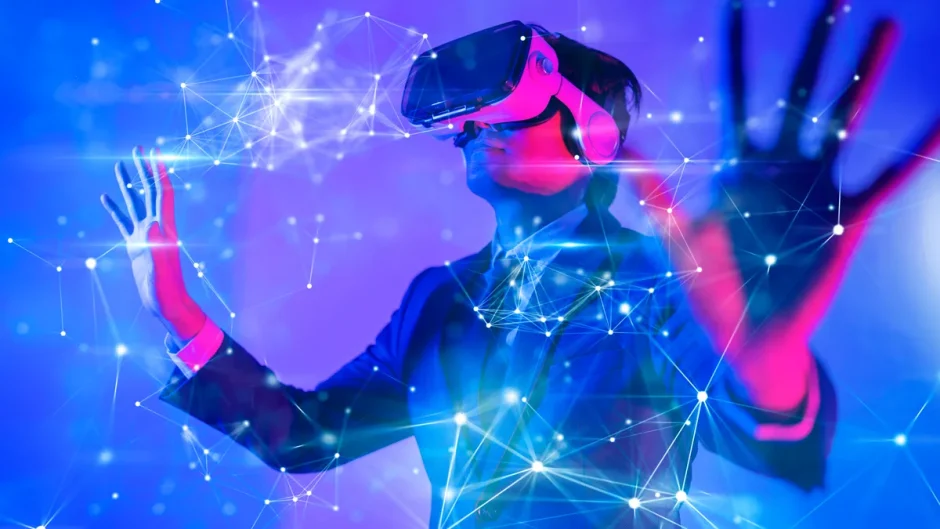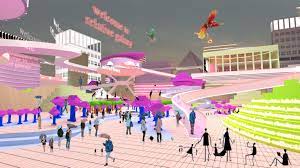According to techno-evangelists, the Metaverse is “the next big thing.” Meta (previously Facebook) has disclosed considerable R&D spending. Heavy hitters in technology are spending a lot of money, and some will stick shortly.
What exactly is The Metaverse?
According to the Economist, it is “an interoperable network of 3D virtual worlds that can be visited concurrently by millions of users with property rights over virtual things.” Gamers already know what it is, especially if they use a platform like Roblox or Fortnite, the most completely realized virtual worlds. Mathew Ball outlines its revolutionary potential in The Metaverse (a fantastic book for non-techies). It demonstrates the cliché that “people expect too much change in a year and too little change in a decade.” It may be prudent for marketers to begin testing and learning as soon as possible.
Technical reasons why the Metaverse will not be realized anytime soon
The technological constraints of the internet and smartphones make compelling large-scale live experiences impossible. They necessitate significantly more bandwidth and far more powerful gadgets. In actuality, game creators create virtual worlds based on the constraints of the internet with as little life experience as possible – games are downloaded, and actions that appear to be live are drawn from a menu of predesigned possibilities. Because of their technological skills, game creators are early movers in the Metaverse.
Why ownership structure and regulation are important
The internet is open and adheres to universal norms. It is simple to exchange information. Because the code is open source, individual advancements may benefit the entire system. This was not unavoidable, yet we take it for granted. For example, we refer to the “internet” rather than the “Amazon internet” or the “Facebook internet.” Academics and government entities supported a uniform norm for the common good in the early days of the internet. It’s different this time. Global firms want proprietary standards to benefit from. If you acquire anything (say, apparel or a shopfront) in one virtual world, you want to be able to transport it to another without having to repurchase it.
We can’t picture what the Metaverse will be like in ten years. Innovative and game-changing technologies are unavoidable. Consider the early days of dial-up internet access. It was mostly about text exchange. We couldn’t have imagined YouTube or streaming services like Netflix. We had no idea that broadband would enable large-scale picture and video transmission. When 4G, geolocation, and smartphones allowed mobile internet, a new kind of invention emerged – applications that unlocked new concepts, such as calling a cab to where you are.
The internet is now built to deliver data packets (Netflix is not a live experience but a pre-treated compressed packet of data). However, technological advancements will enable genuine, live experiences. Keep a look out for the smartphone equivalent of the internet, which will offer up new possibilities. The Metaverse is firmly anticipated to be a “Future Reality.” However, we may not even refer to it as the Metaverse. We no longer refer to “The Information Super Highway,” even though the forecasts made under this umbrella 25 years ago have mostly come true.
What can you do in Metaverse?
Can produce and sell one-of-a-kind items
Non-Fungible Tokens are sold as digital data that tracks who owns a virtual collectible or piece of digital artwork. Gucci collaborated with the Roblox gaming platform in 2021 to launch “The Collector’s Room,” which offered collectible limited-edition Gucci products for sale.
Get together in the Metaverse.
It didn’t take you long to adjust to Zoom. Why not make your own avatar (avatars are another developing area of brand innovation), then retreat into a 3D environment with your avatar and socialize? The Metaverse will revolve around the community and various modes of interaction. In the not-too-distant future, conferences will be held in 3D settings. It will be another location where you may meet and serve your consumers. Immersion is the only way to learn the social codes of any new place.
Keep an eye out for enabling advancements that unleash creativity and opportunity.
You are far more likely to notice them if you are already a player in the Metaverse. When Steve Jobs returned to Apple in 1998, he stated, “I am going to wait for the next big thing.” I believe he would have been super excited about the Metaverse but would not have unveiled Apple’s major new idea right away.
Read:
- Indian e-commerce firm Flipkart Debuts Metaverse Shopping “Flipverse”
- Pakistan enters the metaverse. Country’s first mega web3 project; The Cloud City Metaverse is coming
- First Metaverse Presidential Speech:Macron Apperance on Decentraland













